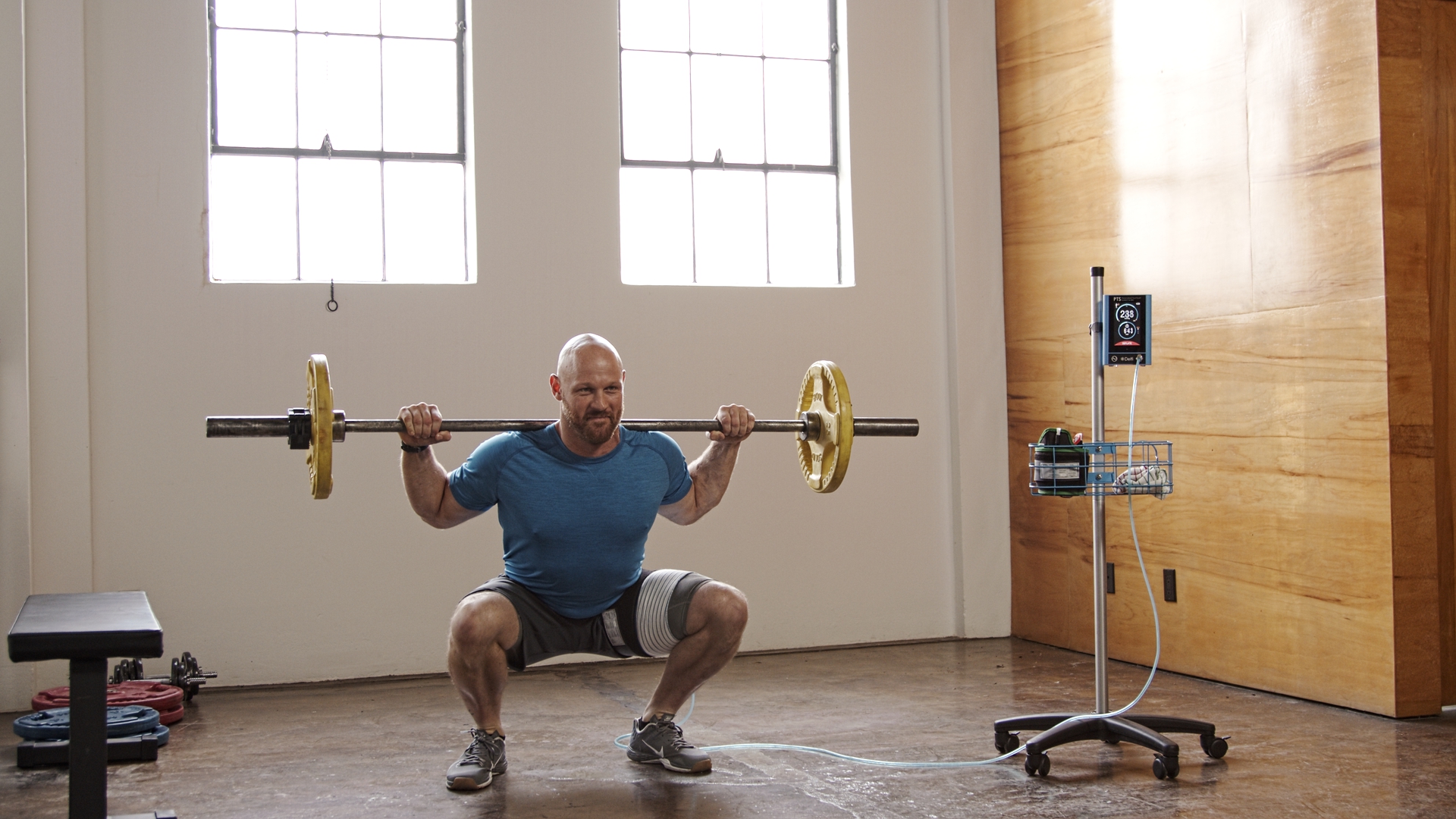Anterior Cruciate Ligament (ACL) Reconstruction is one of the most commonly performed orthopedic procedures yearly in the United States, with injury estimates around 250,000 per year. (Mendias et al. 2013) A primary focus of rehabilitation post-ACLR is restoring quadriceps strength given it’s strong relationship to graft protection and the fact that strength deficits frequently persist well beyond return to play timelines. Gumucio et al reported deficits of greater than 20% in knee extensor strength at 6 months post-ACLR. (Gumucio et al. 2018) Their unique study design identified an early deficit in cross-sectional area (CSA) of the quad that was unresolved at 6 months. Leading the researchers to conclude, in context of other recent works, that perhaps early phase rehab should increase its focus on hypertrophy via exercise prescription and / or pharmacologic intervention.
Recently Hughes and colleagues demonstrated that following ACLR, low load exercise with BFR may result in similar increases in muscle size and strength when compared to a heavy load control.(Hughes et al. 2019) Of particular value was the fact that subjects in the BFR group had less pain, better ROM, and less joint swelling than their higher load counterparts. The ability to restore muscle CSA in the early phases of ACLR rehab, while facilitating a “quiet knee”, could be very valuable in the restoration of strength loss owing to a neuromuscular cause later. In theory, a “quieter knee” would reduce local neuromuscular contribution to strength deficits via arthrogenic muscular inhibition. This lines up nicely with the aforementioned Gumucio conclusions.
Generally, it is thought that the early phase use of BFR is the best target in rehab after ACLR. The data on this remains limited, but until recently no one had examined coupling higher load BFR in a later stage of this rehab process. In our featured paper here, a group from the University of Michigan investigated the application of heavy load BFR following ACLR. Their results lead them to title their paper, “Blood Flow Restriction Training Applied with High-Intensity Exercise does not Improve Quadriceps Muscle Function After Anterior Cruciate Ligament Reconstruction.” Beginning at 10 weeks post-op, and continuing at a visit frequency of twice weekly for 8 weeks, four groups performed high intensity leg press exercise as an addition to “standard-of-care rehabilitation”. The authors found no significant differences between any groups in quadriceps muscle strength, size, or activation.
Here is a quick recap of the intervention:
| Groups | %1RM | %LOP | Sets / Reps | Rest | ROM | Size ↑ | Strength ↑ |
| Con HL | 70% | N/A | 4 / 10 | 2 min | 20-60° | No | No |
| Ecc HL | 70% | N/A | 4 / 10 | 2 min | 20-60° | No | No |
| Con HL + BFR | 70% | 80% | 4 / 10 | 2 min | 20-60° | No | No |
| Ecc HL + BFR | 70% | 80% | 4 / 10 | 2 min | 20-60° | No | No |
* All groups performed a 20% 1RM warm-up set of 10 reps
This study provides some good insight into how BFR is best used. Only a few studies have investigated the coupling of heavy loads with BFR. This, like others, indicates it provides no added value to lifting heavy in a traditional fashion. Further, it is possible that the protocol used in this study was insufficient to cause adaptation regardless of the BFR condition. You’ll note, no group achieved significant changes in muscle size and strength. There are a few potential reasons for this. One is that given the later stage in rehab, subjects may have simply needed a longer duration study to achieve increases in size and strength. Afterall, ACSM guidelines state 12-16 weeks are required for increases in size and strength in the uninjured. Other potential reasons for the lack of change could be: quad strength was tested in a different manner than trained (knee ext vs leg press), the limited ROM utilized (20-60°), only the concentric or eccentric phase of movement was trained, and the “primary aim” values were compared to pre-op values vs pre-intervention. Lastly, the authors do not provide enough detail regarding their “standard-of-care rehabilitation” routine, completed by both groups, to determine whether or not there is a potential session or weekly training volume limitation.
Our readers will note, the application of BFR in this study does not align with the recent Position Stand guidelines. That, however, does not diminish the value of this paper in our mind. While we need work showing us how best to perform BFR, we also need more information on what does not work. Presently, with regard to BFR and its role in ACLR rehabilitation, we’d say it fits best with light loads and earlier on in the rehab continuum.
For additional thoughts on this we’d direct you to the previous blog post on ACLR rehab or the recent piece on BFR in ACLR rehab in the Aspetar Sports Medicine Journal written by Stephen Patterson, PhD, Luke Hughes, PhD, and Johnny Owens, PT.
Mendias CL, Lynch EB, Davis ME, et al. Changes in circulating biomarkers of muscle atrophy, inflammation, and cartilage turnover in patients undergoing anterior cruciate ligament reconstruction and rehabilitation. Am J Sports Med. 2013;41(8):1819-1826.
Gumucio JP, Sugg KB, Enselman ERS, et al. Anterior cruciate ligament tear induces a sustained loss of muscle fiber force production. Muscle Nerve. January 2018. doi:10.1002/mus.26075
Hughes L, Rosenblatt B, Haddad F, et al. Comparing the Effectiveness of Blood Flow Restriction and Traditional Heavy Load Resistance Training in the Post-Surgery Rehabilitation of Anterior Cruciate Ligament Reconstruction Patients: A UK National Health Service Randomised Controlled Trial. Sports Med. July 2019. doi:10.1007/s40279-019-01137-2
Curran MT, Bedi A, Mendias CL, Wojtys EM, Kujawa MV, Palmieri-Smith RM. Blood Flow Restriction Training Applied With High-Intensity Exercise Does Not Improve Quadriceps Muscle Function After Anterior Cruciate Ligament Reconstruction: A Randomized Controlled Trial. Am J Sports Med. 2020;48(4):825-837.


